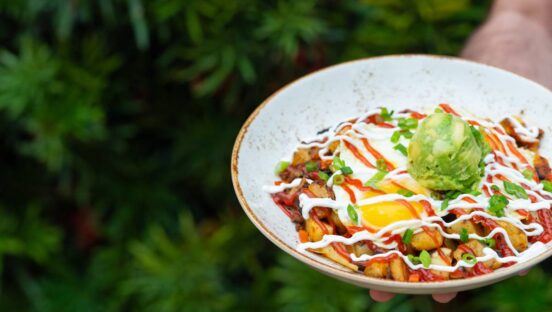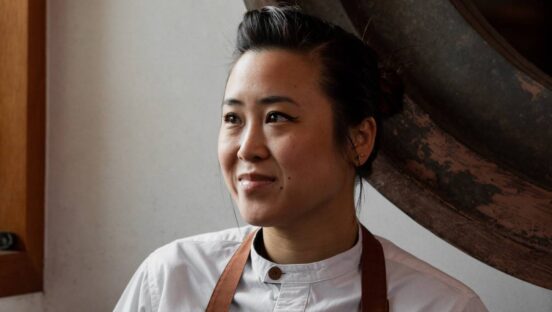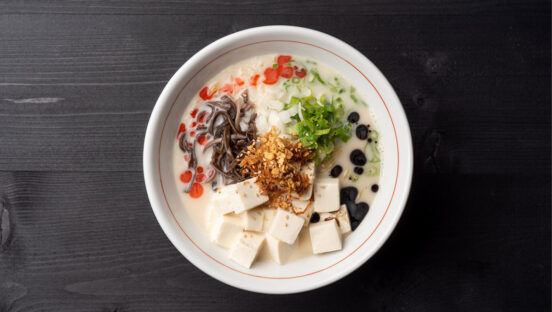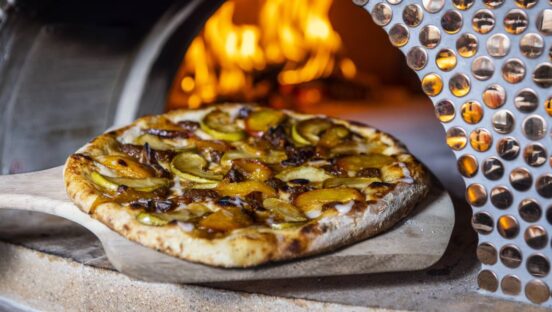





While many might associate lamb with fine dining, it’s become a staple at casual and fast-casual establishments across the country. In fact, prior to the pandemic, Datassential MenuTrends* reported that lamb had grown across all segments over the past 10 years. Leading the way was the fast-casual sector, with 58 percent growth, but all restaurants were menuing 14 percent more lamb, on average, than they did a decade prior.
As diners crave new eating experiences and sustainably sourced protein, lamb has found its way into the market and onto menus. There’s a case to be made that, during and after the pandemic, lamb can help differentiate a menu and draw in new diners.
“Prior to the pandemic, a substantial amount of American Lamb—about 50 percent, especially cuts such as racks and shanks—had been used in foodservice,” Wortman says “Thus, American Sheep producers—like full-service operators—have greatly suffered during the pandemic, but we believe the two parties can help one another bounce back from COVID-19.”
Read on to find out more about what lamb has to offer operators and diners alike.
*Datassential MenuTrends Report on Lamb 2018
Beast+Bottle, of Denver, has a strong relationship with lamb: prior to the pandemic, its menu featured a section of entrees labeled “Lamb,” that sat atop a smaller section titled “Not Lamb.” A Lamb Quarter Pounder with fries, Lamb Shoulder Ragu, and Lamb Meatballs With Polenta were a few sample menu items that showcased not just Chef Paul C. Reilly’s innovative usages of the protein, but also the versatility of lamb itself.
“When I started this restaurant, the idea was to take a whole lamb and let the cuts dictate what the menu would be for the week,” Reilly says. “There are so many different ways you can use lamb, especially when you’re controlling the cuts, and diners really enjoy it because each is its own unique experience.”
Now, like so many full-service restaurants, Chef Reilly and his team have pivoted to menu items that work well for their dine-in customers that eat on their patio, as well as curbside delivery and takeout channels. Still, Beast+Bottle features a Lamb Burger, Pan Roasted Lamb, and Lamb Shoulder Ragu as entrees, as well as Lamb Meatballs as an appetizer.
While lamb has been up and coming in the U.S., it’s long been a part of international cuisines such as Mediterranean fare. In fact, lamb has historically appeared on 91 percent of the menus at Mediterranean-themed fine dining restaurants and 72 percent of other Mediterranean-themed restaurants in the U.S. With so much excitement across the country for new dining experiences—and that phenomenon driving the growth of all types of global fare—lamb has an opportunity to grow alongside trendy flavors.
The American Lamb Board reports some of those Mediterranean ingredients that lamb is most often paired with include yogurt, harissa, olives, fennel, tzatziki, saffron, and sumac. In fine-dining establishments across the U.S., the American Lamb Board reports other trendy, international flavors often paired with lamb include curry, romesco, and sugo sauce.
Aligning with the increase in diners who care about where their food is coming from, the American Lamb Board reports that, prior to the pandemic, 68 percent of diners preferred lamb that was locally sourced. Because every state in the U.S. produces lamb, that means every operator has the ability to promote lamb that is locally-sourced. And many do, too: when fine dining menus call out a source of lamb, domestic lamb is mentioned over imported lamb at a 3-to-1 ratio.
“We encourage chefs to talk with their distributor to find out where their lamb is coming from,” says Megan Wortman, executive director of the American Lamb Board. “It’s also important to let chefs know there’s a growing consumer interest in lamb and they shouldn’t be afraid to menu it because their diners will embrace it.”
Much of the work the American Lamb Board does surrounds making lamb less intimidating for diners. It appears to be working, as they have found consumers in their target market—millennials, that is—are reporting increased interest in purchasing lamb.
“It’s so hard to put into context the sustainability of these lambs, but that’s obviously something diners connect with, so it’s important to find that message,” Wortman says. “One of the ways we try to help do that is by creating video profiles about the complex story of what sustainability looks like on the ground.”
As operators have grown their social media channels during the pandemic, more of them are well positioned to tell the story of their menu items and the sustainability practices that goes along with producing them.
One of the challenges faced every day by restaurants that choose to use upscale meat offerings is how to communicate the quality of the product to the customer. There’s no magic playbook to this, says Reilly, but it rather takes a diligence in training front of house staff.
“We’re always driving the story of who our lamb ranchers are into the heads of our front-of-house staff,” Reilly says. “We constantly recite the details: we get our lamb every Tuesday, and the way we cut it shapes our menu for that week. It’s through repetition, saying the same things over and over again, and they pass that knowledge along to the customer. It’s not for everyone—some servers can’t function in that system, but the ones who can tend to really thrive and stay for a long time.”
For more information on how to add sustainably sourced lamb to your menu, visit the American Lamb Board’s website.












